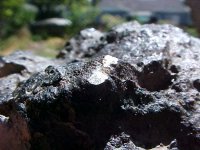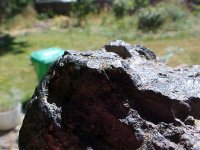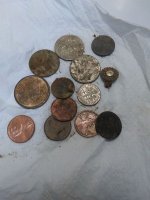Tuberale
Gold Member
Received from GoodyGuy earlier this month. Found in Ohio.
Have tried to file a "window" into the core of the rock using a carbon-steel file. Spent about 20 minutes doing this by hand: stone barely shows any results. Posting the photos I have to let others see. Stone is obviously harder than most rock.
Stone weighs about 1 pound, is mostly black exterior. Had a lot of dirt and sand on it when I first received it. Scrubbed the surface with a toothbrush under water, which turned the water muddy and brownish.
In bright sunlight, the "window" gleams brightly. Otherwise, it looks dull gray. It does not have the appearance of either iron or iron ore (hematite), which a carbon-steel file should have ground fairly quickly.
Aareas of the stone appear molten or flowed.
I do not see regmaglympts. The stone does have many small depressions of irregular shape on the surface.
Stone is weakly magnetic when tested with a kitchen magnet: about half the attraction of the same magnet to steel.
It has a whitish blob about 4mm x 2.5mm near one of the areas which looks like it has been melted at one time. White is not a good color to find on a meteorite.
I'm wondering if this might be a chondrite or stony-iron meteorite?
Have tried to file a "window" into the core of the rock using a carbon-steel file. Spent about 20 minutes doing this by hand: stone barely shows any results. Posting the photos I have to let others see. Stone is obviously harder than most rock.
Stone weighs about 1 pound, is mostly black exterior. Had a lot of dirt and sand on it when I first received it. Scrubbed the surface with a toothbrush under water, which turned the water muddy and brownish.
In bright sunlight, the "window" gleams brightly. Otherwise, it looks dull gray. It does not have the appearance of either iron or iron ore (hematite), which a carbon-steel file should have ground fairly quickly.
Aareas of the stone appear molten or flowed.
I do not see regmaglympts. The stone does have many small depressions of irregular shape on the surface.
Stone is weakly magnetic when tested with a kitchen magnet: about half the attraction of the same magnet to steel.
It has a whitish blob about 4mm x 2.5mm near one of the areas which looks like it has been melted at one time. White is not a good color to find on a meteorite.
I'm wondering if this might be a chondrite or stony-iron meteorite?
Attachments
-
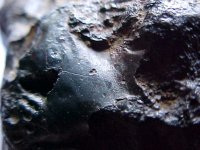 Rock1.JPG36.9 KB · Views: 362
Rock1.JPG36.9 KB · Views: 362 -
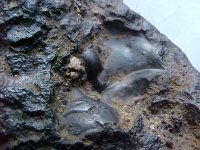 Rock2.JPG49 KB · Views: 359
Rock2.JPG49 KB · Views: 359 -
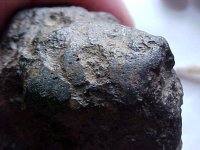 Rock3.JPG36.3 KB · Views: 346
Rock3.JPG36.3 KB · Views: 346 -
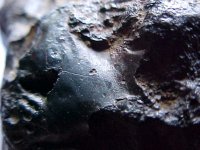 Rock1.JPG36.9 KB · Views: 353
Rock1.JPG36.9 KB · Views: 353 -
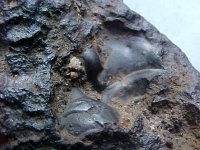 Rock2.JPG49 KB · Views: 351
Rock2.JPG49 KB · Views: 351 -
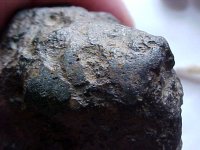 Rock3.JPG36.3 KB · Views: 328
Rock3.JPG36.3 KB · Views: 328 -
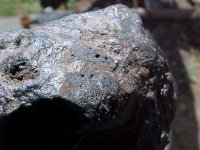 Rock3d.JPG40.7 KB · Views: 347
Rock3d.JPG40.7 KB · Views: 347 -
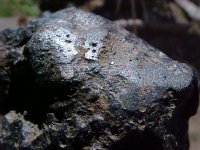 Rock3c.JPG45.9 KB · Views: 350
Rock3c.JPG45.9 KB · Views: 350 -
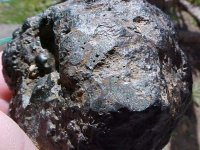 Rock3b.JPG53.5 KB · Views: 351
Rock3b.JPG53.5 KB · Views: 351 -
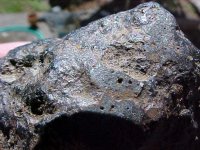 Rock3a.JPG53.9 KB · Views: 343
Rock3a.JPG53.9 KB · Views: 343


